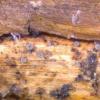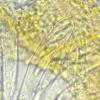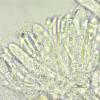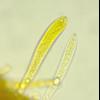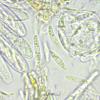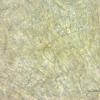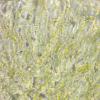
19-06-2019 14:49
Quijada LuisHi everybody,here our last paper of Triblidiaceae

19-06-2019 15:15
 Blasco Rafael
Blasco Rafael
Hola, esta muestra esta sobre ramas de Angelica sy

18-06-2019 17:12
Alessandro FellinRitrovamento effettuato su tronco semisommerso e i

18-06-2019 16:55
 Chris Yeates
Chris Yeates
Bonjour tous a recent collection of damp leaves o

17-06-2019 16:18
Valencia Lopez Francisco JavierHola a todos/asAdjunto fotos de unas Geoporas reco

18-06-2019 07:44
 John Plischke
John Plischke
2 weeks ago in New York we saw what appears to be

16-06-2019 19:17
 Nicolas VAN VOOREN
Nicolas VAN VOOREN
On dead stem of Veratrum, numerous dot-like specim
Bonsoir,
Sur tige morte d'Epilobium angustifolium (au bord d'un chemin blanc à 1'630m).
Apothécies 0.1 - 0.2 mm de diamètre, hyménium gris à jaune clair, surface externe et marge couvertes de poils, asques octosporés, 47 - 65 x 7 - 9 µm, IKI+, crochets+, spores lisses, hyalines, 11- 15 x 2.75 - 3.5 µm, paraphyses à contenu réfringent, idem les poils de la marge, crochus au sommet.
Merci d'avance pour vos avis.
Elisabeth

erinnert etwas an C. flaveola, aber die ist ja 4 sporig und an Farn.
Ist schwierig, und man muss in Phialina schauen, bei Raitviir etc.
Zotto
